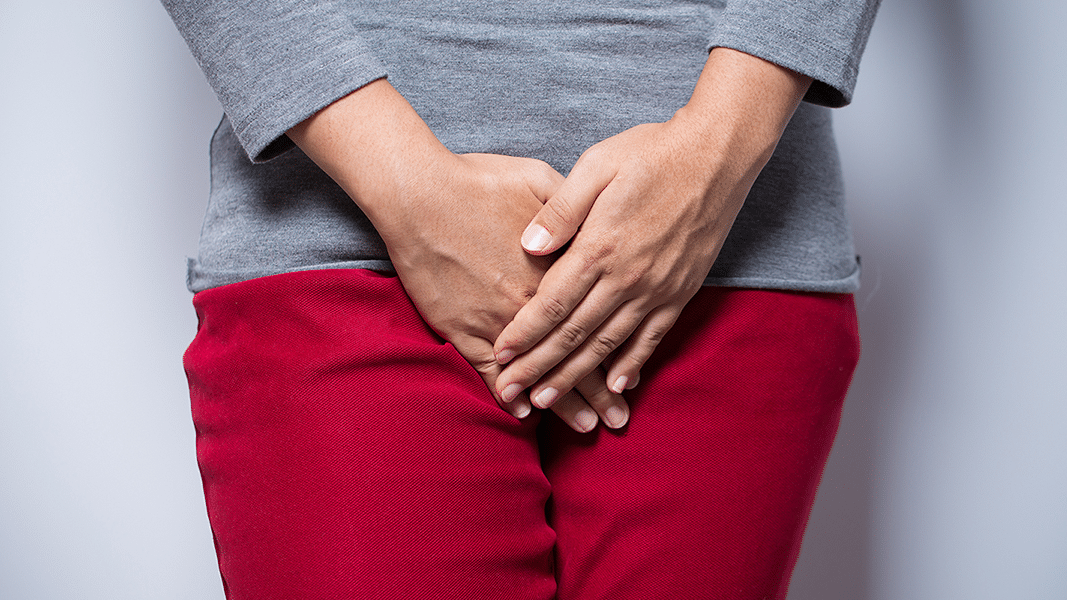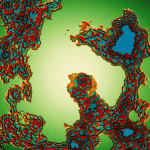Scissor-walks and stutter-steps: the familiar dance performed by nearly 33 million Americans suffering from Overactive Bladder (OAB) – also known as Spastic Bladder and Detrusor Overactivity. OAB tends to plague people struggling with Multiple Sclerosis (MS) or other neurodegenerative diseases. While not exactly a given as we age, OAB also seems to affect a disproportionate number of older women and men.
Currently, two types of medications are available to treat OAB – antimuscarinics and Mirabegron (Myrbetriq). Doses of these powerful drugs must be carefully controlled. But even when used properly, these drugs can generate dry mouth, constipation, dry or itchy eyes, blurred vision, indigestion, urinary tract infection, urinary retention, drowsiness, high blood pressure and headaches. Taking too much accidentally can have more serious consequences, resulting in heart rhythm changes, hallucinations, seizures, and coma.
Because bladder control falls mostly to the central nervous system, it’s no surprise that cannabis may present novel and effective treatment options. We know that cannabinoid receptors are profusely expressed in both the central nervous system and peripheral nervous system. And we also know that these receptors are activated by endogenous compounds as well as components of the cannabis plant. Thanks to ongoing research on cannabis and MS, quite a bit of useful data about incontinence has been collected, both in preclinical studies and a few small clinical trials.
How Bladder Control Works
The bladder is a pretty simple structure as far as organs go. Its major component is the smooth detrusor muscle. To facilitate urination, the lower detrusor muscle – located near the bottom of the bladder and contiguous with the urethral sphincter that controls outflow – contracts. During the filling stage, the detrusor remains relaxed and the sphincter closed.
The role of the central nervous system in continence appears to be fairly straightforward. Neural circuits in the brain and spinal cord enable the healthy function and voluntary control of the bladder. According to research at the University of Pittsburgh School of Medicine, “The central nervous mechanisms controlling the LUT [lower urinary tract] are organized in the brain and spinal cord as simple on-off switching circuits that are under voluntary control.”
However, as reported in the journal Urology, “Damage to central inhibitory pathways or sensitization of peripheral afferent terminals [nerve fibers] in the bladder can unmask primitive voiding reflexes that trigger bladder overactivity.”
Summarized, this means that after we’ve been potty trained, we can control our bladders through the sensory inputs and our intent. But with overactive bladder conditions, communication through the nervous system between bladder and brain goes a little haywire. Fortunately, it looks like medical science is poised to make a breakthrough by targeting our endocannabinoid system.
Endocannabinoids & Bladder Function
The bladder and its surrounding layers contain both types of cannabinoid receptors — CB1 and CB2. A 2017 report by South Korean scientists showed that detrusor overactivity can be affected by known agonists (activators) of the two cannabinoid receptors. In the urothelium, where the smooth detrusor muscle cells meet the sensory neurons, CB1 activity exhibited special promise as a modulator in cases of OAB.
A precise understanding of the pathways of cannabinoid remediation of OAB remains up for debate and more study, but the evidence emerging from ongoing research is that cannabis therapeutics can certainly play a beneficial role.
Given that most medications designed to treat OAB act to calm the nerves, it makes sense that cannabis, an anti-anxiety botanical, could confer a similar effect. In a detailed 2017 meta-analysis of the scientific literature, a team of European scientists screened thousands of articles in search of quality human trials. They found three, and those studies used either tetrahydrocannabinol (THC) or a combination of THC and cannabidiol (CBD) to study efficacy against overactive bladder in MS patients.
THC & CBD in Human Incontinence Trials
The meta-analysis describes two random controlled trials and one open label trial comprising 426 male and female MS patients. They were treated with THC/CBD, administered either by capsule or oromucosal spray. The scientists found that the cannabis treatments “relevantly decreased incontinence episodes in all three studies.”
No side effects were reported in the tablet trials, but some of those who received the spray reported dizziness, headaches, vomiting, dry mouth and urinary tract infection. These side effects were considered mild compared to conventional treatments. Whether the administered drugs were synthetics, natural plant extracts or both was not reported in the meta-analysis.
The possibility of safe and effective cannabis-derived remedies for incontinence (without harsh side effects) spurs excitement in the holistic health community. However, it remains to be seen if CBD isolate or CBD-rich hemp with little or no THC will prove to be as effective as CBD combined with THC for OAB patients.
Linda M. June writes for the natural health and wellness community. She can be found at TheLetterista.com. Copyright, Project CBD. May not be reprinted without permission.
Sources
- National Association for Continence. What is Overactive Bladder?
- National Institute on Aging. Urinary Incontinence in Older Adults.
- UCLA Health. Human Endocannabinoid System. https://www.uclahealth.org/cannabis/human-endocannabinoid-system
- Debra A. Kendall and Guillermo A. Yudowski. Cannabinoid Receptors in the Central Nervous System: Their Signaling and Roles in Disease. (Jan 4, 2017).
- Peter Sam and Chad A. LaGrange. NCBI Anatomy, Abdomen and Pelvis, Bladder Detrusor Muscle. (Nov 13, 2018).
- Kim Ann Zimmerman. LiveScience. Urinary System: Facts, Functions & Diseases. (Mar 7, 2018).
- Poison Control. Side Effects of Overactive Bladder Medication.
- WC de Groat. A neurologic basis for the overactive bladder. (Dec 1997).
- Bradley E. Alger. Getting High on the Endocannabinoid System. (Nov 1, 2013).
- Sung Dae Kim, et al. Expression of cannabinoid 1 and, 2 receptors and the effects of cannabinoid 1 and, 2 receptor agonists on detrusor overactivity associated with bladder outlet obstruction in rats. BMC Urology. (Dec 29, 2017)
- Schier de Mello, et al. Antidepressant-like and anxiolytic-like effects of cannabidiol: a chemical compound of Cannabis sativa. (2014).
- Nadim Abo Youssef, et al. Cannabinoids for treating neurogenic lower urinary tract dysfunction in patients with multiple sclerosis: a systematic review and meta‐analysis. Wiley Online Library. (Jan 6, 2017).







